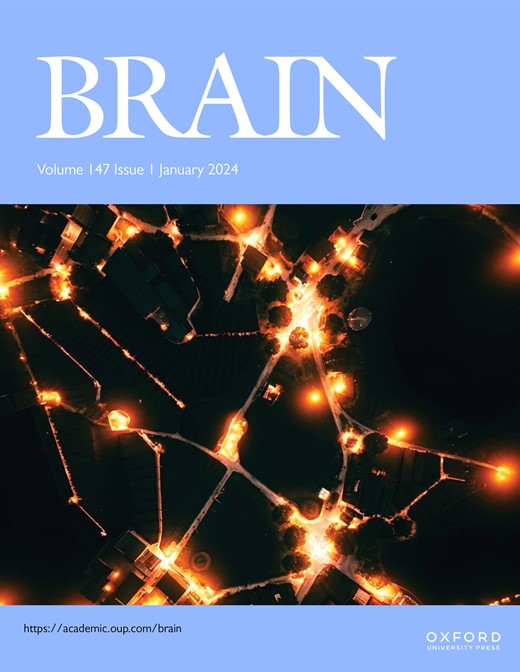Single-cell dissection of the genotype-immunophenotype relationship in glioblastoma
IF 10.6
1区 医学
Q1 CLINICAL NEUROLOGY
引用次数: 0
Abstract
Glioblastoma (GBM) is the most aggressive and lethal adult brain tumor. The cellular heterogeneity within the tumor microenvironment (TME) plays a critical role in the complexity of treatment and poor survival. GBM is typically classified into 3 molecular subtypes—Classical, Mesenchymal, and Proneural—associated with EGFR, NF1, and PDGFRA genetic drivers, respectively. Yet, the role of these driver mutations on the GBM TME is not fully understood. Here, we utilized single-cell RNA-sequencing of genetically engineered mouse GBM models incorporating human-relevant EGFRvIII, PDGFB, and NF1 driver mutations to systematically characterize the genotype-immunophenotype relationship of the three GBM subtypes. Murine genetic GBM models at the single-cell level effectively mimic the inter- and intra-tumor heterogeneity found in human counterparts. Our analysis revealed that PDGFB-driven tumors were more proliferative and enriched for Wnt signaling interactions, while EGFRvIII-driven tumors showed an elevated interferon signaling response. Moreover, Nf1-silenced tumors displayed higher myeloid abundance, myeloid immunosuppressive interactions involving Osteopontin, Treg infiltration, and expression of immune checkpoint molecule Ctla4. Overall, we established a human-mouse analytical platform for genotype-aware target discovery and validation, which offers promising new avenues for more effective, personalized treatments in GBM.胶质母细胞瘤基因型-免疫表型关系的单细胞解剖
胶质母细胞瘤(GBM)是最具侵袭性和致命性的成人脑肿瘤。肿瘤微环境(TME)内的细胞异质性在治疗的复杂性和生存率差中起着关键作用。GBM通常分为3种分子亚型:经典型、间充质型和前叶型,分别与EGFR、NF1和PDGFRA遗传驱动相关。然而,这些驱动突变在GBM TME中的作用尚不完全清楚。在这里,我们利用单细胞rna测序技术对含有人类相关EGFRvIII、PDGFB和NF1驱动突变的基因工程小鼠GBM模型进行了系统地表征了三种GBM亚型的基因型-免疫表型关系。小鼠遗传GBM模型在单细胞水平上有效地模拟了在人类同类中发现的肿瘤间和肿瘤内的异质性。我们的分析显示,pdgfb驱动的肿瘤具有更高的增殖能力,并且Wnt信号相互作用富集,而egfrviii驱动的肿瘤表现出更高的干扰素信号反应。此外,nf1沉默的肿瘤表现出更高的髓细胞丰度,髓细胞免疫抑制相互作用包括骨桥蛋白、Treg浸润和免疫检查点分子Ctla4的表达。总的来说,我们建立了一个基因型感知靶点发现和验证的人-鼠分析平台,为更有效、个性化的GBM治疗提供了有希望的新途径。
本文章由计算机程序翻译,如有差异,请以英文原文为准。
求助全文
约1分钟内获得全文
求助全文
来源期刊

Brain
医学-临床神经学
CiteScore
20.30
自引率
4.10%
发文量
458
审稿时长
3-6 weeks
期刊介绍:
Brain, a journal focused on clinical neurology and translational neuroscience, has been publishing landmark papers since 1878. The journal aims to expand its scope by including studies that shed light on disease mechanisms and conducting innovative clinical trials for brain disorders. With a wide range of topics covered, the Editorial Board represents the international readership and diverse coverage of the journal. Accepted articles are promptly posted online, typically within a few weeks of acceptance. As of 2022, Brain holds an impressive impact factor of 14.5, according to the Journal Citation Reports.
 求助内容:
求助内容: 应助结果提醒方式:
应助结果提醒方式:


